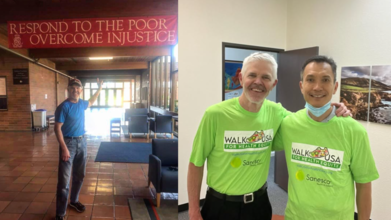- Health Conditions A-Z
- Health & Wellness
- Nutrition
- Fitness
- Health News
- Ayurveda
- Videos
- Medicine A-Z
- Parenting
- Web Stories
Does PCOS Makes IVF More Complicated? Fertility Experts Share Why Your Body Might Need A Different Plan

Credits: Health and me
If you're planning or experiencing the emotional and physical rollercoaster of IVF while living with Polycystic Ovary Syndrome (PCOS) you're not overthinking about the added complexity. While IVF is often painted as the silver bullet for infertility, women with PCOS quickly discover that one-size-fits-all protocols often fall short for them. The diagnosis of PCOS introduces a unique set of biological challenges that can’t be managed with standard IVF plans.
So, what makes IVF more complicated for people with PCOS? And how can treatments be tailored to fit these more complex bodies? We asked three top fertility specialists to break it down—and their answers underscore the importance of a highly personalized approach.
"Polycystic Ovary Syndrome (PCOS) is especially difficult to manage with IVF due to its combination of endocrine disturbance, insulin resistance, and a diffuse number of antral follicles," says Dr. Nishi Singh, Head of Fertility at Prime IVF.
According to Dr. Singh, women with PCOS often show an increased ovarian reserve, which may sound like a good thing. But in reality, it sets the stage for them to become hyper-responders—women who react too strongly to standard IVF stimulation, putting them at risk for Ovarian Hyperstimulation Syndrome (OHSS).
To mitigate these risks, Dr. Singh relies on individualized ovarian stimulation using low-dose therapy and GnRH antagonist protocols. “Oocyte quality is also an issue in PCOS. Although numerous eggs can be retrieved, they may have less developmental potential,” she notes. For this reason, the dosage must be carefully calculated to avoid overstimulation while still supporting optimal outcomes.
But it’s not just about the medication. “Successful IVF in PCOS goes beyond medical management,” Dr. Singh emphasizes. “Therapy would necessitate an approach that includes a lifestyle reaching a peak of metabolic health.”
That includes weight control, lifestyle modifications, insulin-sensitizing agents, and targeted supplements—all of which can improve ovulatory function and egg quality. Dr. Singh stresses that personalized care must be embedded in every stage of the IVF cycle, from initial stimulation to embryo freezing.
“If done with accuracy, IVF in PCOS patients is not a limitation but a promise,” she concludes. “The solution is individualized, regulatory, and based on individualistic knowledge of each patient's reproductive plan.”
Balancing High Ovarian Reserve, Low Egg Quality for Women with PCOS
Dr. Kaberi Banerjee, Founder and Medical Director of Advance Fertility & Gynecology Centre, agrees that PCOS requires a meticulous and integrated approach. "PCOS presents a special challenge in reproductive medicine since its impact on ovarian function is multidimensional," she says.
She explains that while high ovarian reserve is common in PCOS, as indicated by higher AMH and antral follicle counts, the quality of those eggs can be subpar. "Ovulation can be irregular or even cease to occur. Even mild stimulation can bring about an exaggerated ovarian response, increasing the risk of OHSS," she notes.
To counter this, Dr. Banerjee emphasizes pre-treatment optimization. Addressing insulin resistance, hormonal imbalances, and weight management before starting IVF can greatly improve results. She recommends lifestyle adjustments such as low glycemic diets, moderate physical activity, and supplements like inositols and CoQ10. Metformin also plays a central role in managing insulin resistance and improving ovarian response.
Her go-to strategy during IVF includes starting with low-dose gonadotropins, using GnRH antagonist protocols, and employing GnRH agonist triggers. “In high responders, we commonly follow a ‘freeze-all’ policy to prevent compromising endometrial receptivity,” she explains.
For younger PCOS patients, early preconception counseling and ovulation monitoring are vital. “First-line therapy such as letrozole, usually taken in combination with metformin, is very effective,” she says. And if that doesn’t work? IVF with a tailored approach is the next logical step.
“Achievement in treating PCOS-related infertility is a harmonious, evidence-based measure that benefits safety and long-term reproductive health,” Dr. Banerjee concludes.
What is The Role of Insulin, Hormones And Weight in IVF Success?
"The management of PCOS and IVF requires an extremely individualized approach," says Dr Shweta Mishra, Gynecologist and Obstetrician at Trulife Family Health Clinic in Ghaziabad, underscores the need for ultra-personalized care.
Dr. Mishra points out that PCOS affects nearly 70–80% of women with insulin resistance and presents with high antral follicle counts—often exceeding 24 per ovary. This makes conventional stimulation protocols not just ineffective but risky. “PCOS women may have a normal ovarian reserve but are susceptible to hyperstimulation,” she says. That means patient-specific regimens like low-dose stimulation and GnRH antagonist protocols are non-negotiable.
Egg quality is another critical piece of the puzzle. “Although numerous eggs can be retrieved from PCOS patients, the developmental potential of those eggs may be compromised,” she warns. Improving egg quality involves not just medication but also addressing hormonal balance through weight management, insulin sensitization, and supplements. “Enhancement of metabolism is critically important for success in IVF,” she adds.
Her message to younger women is clear: early diagnosis and a comprehensive plan can make all the difference. “PCOS need not be viewed as a disadvantage. It is an aspect that needs caution. Success rates significantly increase when IVF is treated with a personalized, specifically designed method.”
Does PCOS Make IVF More Complicated?
Yes, but it also opens the door to more personalized, effective treatments. As all three experts make clear, success with IVF and PCOS isn’t about pushing harder or using more medications. It’s about understanding the body’s unique biochemistry and crafting a treatment plan that respects its complexity.
IVF in the context of PCOS demands more than a protocol—it demands a philosophy of care rooted in customization, evidence-based medicine, and long-term reproductive health. And when that’s done right, PCOS isn’t a limitation. It’s a roadmap to smarter fertility care.
Before beginning any IVF treatment, consult a fertility specialist who understands the nuances of PCOS. The road may be more complex, but with the right plan, it can also lead to lasting success.
Health Equity Walk: Why One Doctor Is Walking Across the US On Foot

Credits: Instagram
Dennis Godby, 69, ND, MA, a Sacramento-based Naturopathic Doctor is again on his quest to walk for health equity. This walk, known as Walk USA for Health Equity (WUHE) is a journey he started in 2022, where he walks on foot across America and is the third crossing of the USA on foot. On the 4th leg of this journey between August 25-September 24, he plans to walk 765 miles from Fargo to Bozeman.
Why Is He Walking?
The reason? To raise awareness of health disparities, including discriminatory practices against Black women who die at childbirth, and to advocate for all Americans to have the opportunity to have access to optimal health. His walk comes in the light when much fund cuts have been made from the US healthcare ever since the RFK Jr-Trump administration has been found. Recently, RFK Jr. pulled $500 Million fund from mRNA vaccine projects and Donald Trump overhauled the vaccine committee.
What Does His Day Look Like?
Every morning around 7:30 a.m., Dr Godby laces up his walking shoes, grabs his essentials, and sets off on a mission that goes far beyond personal endurance. The 69-year-old naturopathic doctor is halfway through a bold, 32,000-mile cross-country walk to spotlight racial disparities in healthcare, promote natural medicine, and lead by example.
His journey began in Myrtle Beach, North Carolina, in 2022 and is expected to conclude in Seattle, Washington, in 2026. Divided into five major segments, each completed over a month every year, Dr Godby recently reached the halfway point of his third leg in Pine Island. This year’s stretch covers nearly 700 miles, ending in Fargo, North Dakota. Along the way, he’ll pass through the Twin Cities and St. Cloud, partnering with local communities, health advocates, and naturopathic doctors to hold forums on health equity.
For Dr Godby, this isn’t just a walk, it’s a statement.
“I put my body on the line, because all I have is my body,” he said in a previous interview. “And to put it on the line to say that I care about these issues and please listen.”
The path hasn’t been easy. A torn knee meniscus in 2018 and open-heart surgery in 2024 to address a heart murmur might have sidelined many. But not Godby.
“[The doctors] said you get the surgery; you’ll be done in two months. Your heart will be ready to go,” he recalls. “They were some of my biggest supporters for me walking.”
Godby walks roughly 26 miles a day, finishing his trek by 5:30 p.m., depending on events or media interactions. He rests in donated accommodations from naturopathic doctors, hotels, or even in the back of a support truck. Unlike the solo miles of his early journey, nearly 2,000 of them, he now travels with a support driver due to the increasing distance between towns.
The “Walk USA for Health Equity” isn’t just a personal mission, it’s a community-driven movement. In each state, Dr. Godby collaborates with local organizations and health professionals to raise awareness and spark conversations about unequal access to healthcare. His latest partnerships in North Dakota and Montana will help carry the movement forward as he prepares for the final two legs: North Dakota to Montana (2025), and Bozeman to Seattle (2026).
Treating Patients Back Home
Back home in California, where he practices natural medicine, Dr Godby continues to treat patients during the off-season, using his experience to encourage them to embrace walking as a part of their healing. Over the last five years, including training, he’s logged over 15,000 miles, averaging 8.5 miles a day.
In 2023, he published Health for All: A Journey Towards Health Equity, a book that chronicles not only his walks but also his lifelong fight for social justice through medicine and movement.
Awarded the “True Grit” honor by the American Association of Naturopathic Physicians in 2023, Dr Godby’s journey isn’t just about reaching Seattle—it’s about building a healthier, more equitable nation, one step at a time.
Why Are Women More Prone To Headaches Than Men?

(Credit-Canva)
Headaches may not be that serious, but they have the ability to derail your day within minutes. Throughout the day, lack of sleep or food or any other ailments like fever can lead to a throbbing headaches. However, women complain about headaches more often than men, why is that?
Headaches can seriously impact your life, and in the U.S. alone, they lead to 112 million sick days each year, according to Johns Hopkins Medicine.
Why Do Women Get More Headache?
While about a third of all people get headaches, women suffer from them far more often than men. One of the main reasons for this difference could be hormonal changes.
Hormone fluctuations can trigger headaches. Specifically, changes in estrogen levels can cause problems. Estrogen is a key hormone in the female reproductive system, and headaches can happen anytime its levels shift. This includes dips in estrogen right before your menstrual cycle, as well as during the start of menopause or after a hysterectomy. Headache triggers related to hormones include:
- Menstruation
- Taking birth control pills
- Pregnancy
- Breastfeeding
- Menopause
Is It a Migraine or a Tension Headache?
The two most common types of headaches for women are tension headaches and migraines. A tension headache often feels like a tight band squeezing your head. A migraine, however, is typically a throbbing or pounding headache. Migraine symptoms often include:
- Pain that lasts for 4 to 72 hours
- Seeing spots or zigzag lines (an "aura")
- Pain on one side of the head
- Pain that gets worse with physical activity
- Sensitivity to light, sound, or smells
- Nausea and/or vomiting
Conditions That Could Trigger Migraines Specifically in Women
For every man who gets a migraine, three women suffer from the same severe headaches, which can come with nausea and sensitivity to light and sound. This makes migraines one of the most common disabling conditions for women globally. Researchers at UCLA believe they may have found a reason for this 3-to-1 ratio: women might have a quicker trigger for the brain activity that causes migraines.
A team of researchers studied mice and discovered a big difference between males and females in a process called cortical spreading depression (CSD). CSD is a powerful wave of brain activity that scientists believe is the main cause of migraines. This wave can cause not only the headache pain, but also the vision problems, nausea, and dizziness that often go with them.
In their tests, the female mice were much easier to trigger. The brain waves that lead to migraines started with a weaker signal in females compared to males. In fact, it took a signal up to three times stronger to start CSD in the male mice.
Lifestyle Changes for Headache Relief
Making some changes to your daily life can help you manage migraines and headaches. It's important to avoid known triggers like alcohol and stress. Staying hydrated is also key—aim for 1.5 to 2 liters of water each day. If caffeine affects your sleep, limit coffee and energy drinks. Finally, make sure you get enough quality sleep and maintain a consistent sleep schedule and meal times.
Other treatments that can help include physical therapy for muscle stiffness in your neck and shoulders, and behavioral therapy to help reduce stress. If these lifestyle changes don't work, you should talk to your doctor. By understanding how your hormones can cause headaches, you can find the right treatment to manage your symptoms and get back to your daily routine.
Fit And Healthy Flight Attendant Got A Life-Changing Diagnosis After He Noticed A Persistent Cough

(Credit-Canva)
Often, caught up in the worries of paying your bills and other stress, we forget to prioritize our health. How often have you ignored a cough or forgotten to take your vitamins for the day? Although bad things and surprising issues do pop up, we don’t consider them an issue until it affects us. It was the same for this young flight attendant, who never knew that a simple cough could lead to a shocking diagnosis, possibly saving his life.
Lingering Cough and a Search for Answers
In 2021, Warren developed a cough that came and went. With the COVID-19 pandemic ongoing, he was regularly tested for his job, with all results coming back negative. When the cough persisted, he visited his doctor, who initially prescribed antihistamines and then omeprazole, suspecting acid reflux.
Wanting more answers, Warren had a chest X-ray and a CT scan. The scans eventually revealed an abnormality in one of his lungs, leading to surgery in February 2022. It was then that he received the devastating diagnosis of Stage 3a lung cancer, which had spread to two of his lymph nodes.
From Treatment to Recovery
Warren's surgery was followed by several cycles of chemotherapy. He experienced severe side effects, including hair loss, constant fatigue, and sickness. After completing his treatment, Warren was signed off as fit to fly in January 2023, following a series of clear scans. He has since returned to work on long-haul flights and is enjoying running again, logging 15-20 miles a week.
Despite his recovery, Warren is candid about the ongoing mental health challenges. He plans to start counseling to manage his anxiety about the cancer returning and is committed to fundraising for organizations like Cancer Research UK and the Roy Castle Lung Cancer Foundation.
Lung Cancer Diagnosis – Why Is It A Big Cause Of Concern?
Being the leading cause of cancer-related deaths, lung cancer has the highest mortality rates in both men and women, according to the World Health Organization. What’s even more concerning is that it is often diagnosed in the advanced stage, during which the treatment options available are limited.
Warren's story highlights that lung cancer can affect anyone, regardless of age or lifestyle. He urges people to listen to their bodies and see a doctor if something doesn't feel right.
Early-stage lung cancer often has no obvious symptoms. However, you should be aware of a persistent cough that doesn't go away after three weeks or gets worse. Other potential signs include:
- Recurrent chest infections
- Chest pain when coughing
- Persistent breathlessness
- Unexplained fatigue or low energy
- Loss of appetite or unexplained weight loss
What Follows A Lung Cancer Diagnosis?
According to the American Lung Association, it's important to be prepared for several key aspects of the journey. Here's what you can expect:
Be Your Own Advocate
Take charge of your healthcare decisions. Ask questions, do your research, and ensure your needs are met. A friend, family member, or care coordinator can also help you advocate.
Manage Emotional Changes
It is normal to experience a range of emotions. Find healthy ways to cope, like talking to friends and family, journaling, joining a support group, or seeking professional help.
Relationships May Shift
Be prepared for your relationships to change. Some may grow closer, others more distant. It's also normal to feel misunderstood or to have different expectations from others.
Embrace Lifestyle Changes
Making healthy lifestyle choices is crucial. Quitting smoking, eating nutritious food, staying physically active, and managing stress are all vital for your recovery and long-term health.
Prepare for Lasting Side Effects
Some side effects from treatment might linger. Discuss any ongoing symptoms with your doctor and ask about connecting with a palliative care specialist to help manage these effects and improve your quality of life.
Plan for Ongoing Checkups
Your care continues after treatment. Before your final appointment, get an "end-of-treatment summary" from your doctor that outlines your diagnosis, treatments, and future follow-up schedule.
© 2024 Bennett, Coleman & Company Limited

